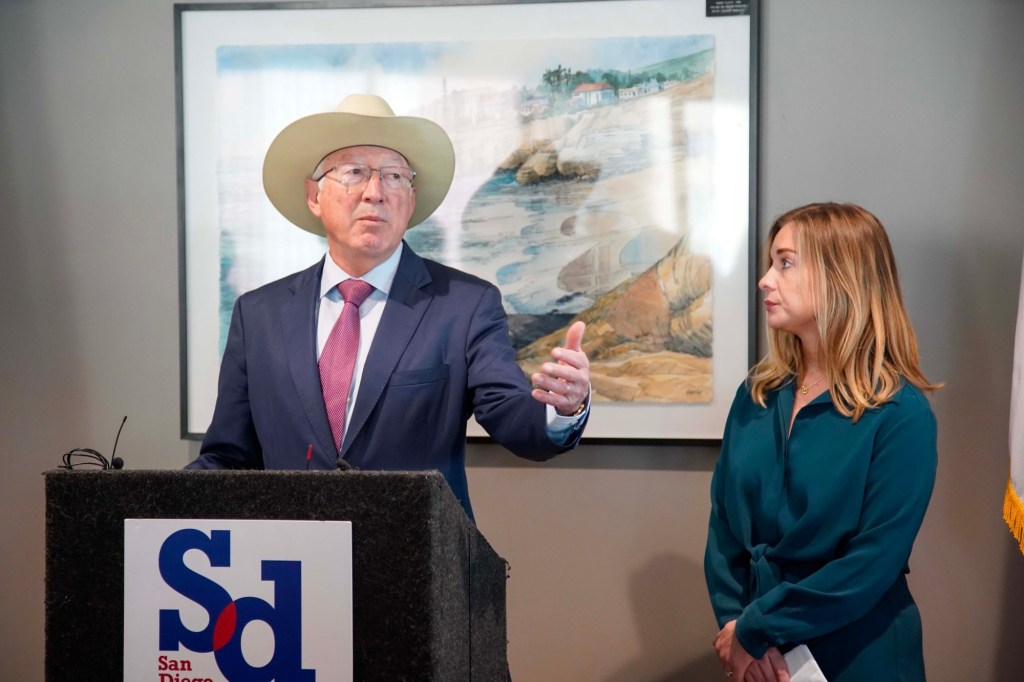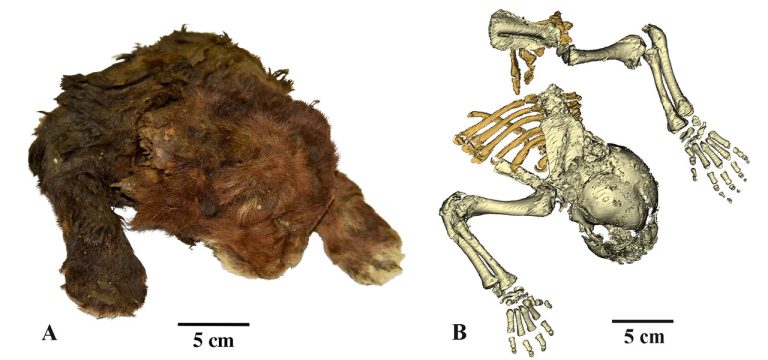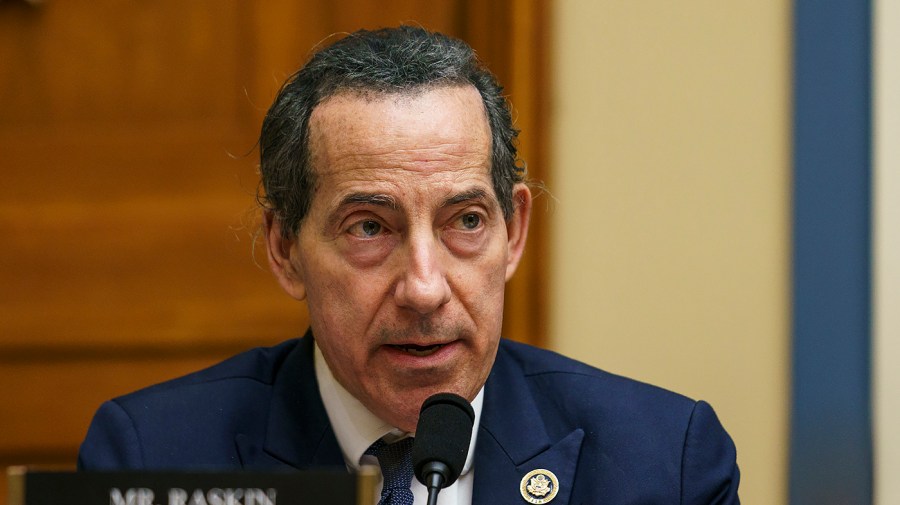

U.S. Ambassador to Mexico Ken Salazar visited San Diego and Tijuana on Tuesday, where he outlined what he described as key ways to “advance toward a modern, secure and efficient border,” including joint planning and better coordination between both countries.
“The Cali-Baja region is the beating heart of the most dynamic economic relationship in the world,” Salazar said after meeting with local leaders at the San Diego Regional Chamber of Commerce. “This is no coincidence. It is a result of the effort and commitment of a binational community that for decades has been a pioneer in our bilateral cooperation.”
Salazar said cooperation between the two countries is crucial to “keep this momentum going forward at this exciting moment.”
“This includes making sure we have cutting-edge technology combined with the joint operations that are critical to curbing the trafficking of arms, drugs and people, while expecting and supporting lawful trade between the United States and Mexico,” Salazar said when talking about border security.
He pointed to the Otay Mesa East border crossing project, originally scheduled to be completed by late 2024, as an example of the need to better coordinate efforts on both sides of the border “to ensure projects advance in parallel and without delays.”
While Mexican officials have said they will have their part of the project completed by the end of this year, the U.S. has set the new tentative date at the end of 2027.
The San Diego Association of Governments, or SANDAG, which is the project’s sponsor along with Caltrans, has said that the delay on the U.S. side has to do with pending agreements with the federal government on operation and maintenance roles and responsibilities.
“It’s also an opportunity for us to look at our own processes and see how it can be done better,” Salazar said. “Why do things take so long? What is functioning and what is not functioning within the United States government to be able to do it better on projects up and down the border?” he added.
In what may have been his last visit to the region as ambassador, Salazar, who was appointed by President Joe Biden, reflected on what’s next for U.S.-Mexico relations once President-elect Donald Trump takes office.
“As the whole world looks at what happens after January 20, there are a lot of unknowns,” he said. “I’m sure the Mexican government, and the communications that I’ve had with them, they’re trying to figure it out as well. You know, my own hope and my own experience is that solutions are found when you work together.”
The comments come a week after Salazar in a news conference openly criticized the Mexican government on its recent handling of drug violence, saying it has “closed its doors” on U.S. support and has downplayed the problem.
The San Diego Regional Chamber of Commerce CEO Jerry Sanders agreed on the importance of the binational relationship.
“Not just for trade, but also for migration and all the rest. And I think things will work out,” Sanders said. “There’s a lot of close relationships, and there’s a lot of people who want to see it work out on both sides of the aisle. So I anticipate a good transition.”
Salazar wouldn’t comment on Trump’s immigration plans, such as mass deportations or using the military for such purposes. But he did outline what the current administration has worked on, such as expanding legal pathways, creating opportunities for people to stay in the country, and more enforcement.
Salazar noted that the number of migrant encounters has dropped since the implementation of Biden’s executive order restricting asylum in June.
U.S. Customs and Border Protection said Tuesday that migrant encounters between ports of entry along the U.S.-Mexico border have dropped more than 55% since the presidential proclamation went into effect. In October, the U.S. Border Patrol’s San Diego Sector remained the busiest along the southern border with 14,165 encounters, according to the latest data. Encounters were up slightly — 6% — in the San Diego Sector since the prior month.
After meeting with members of the San Diego Regional Chamber of Commerce, Salazar crossed the border into Tijuana, where he met with environmentalists and community members from the Los Laureles neighborhood who have led cleanup efforts to address cross-border pollution.
Salazar said in Tijuana that significant progress has been made in addressing this long-standing problem. The ambassador visited the region in January, when Mexico broke ground on the long-awaited overhaul of the San Antonio de los Buenos wastewater treatment plant. The project is expected to be completed within months.
He noted that Biden has asked Congress for an additional $310 million to upgrade the South Bay International Wastewater Treatment Plant in San Diego as part of his disaster relief proposal.








